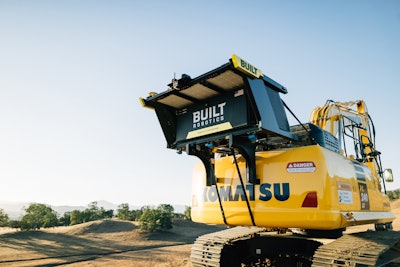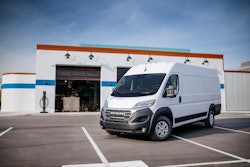
Editor’s Note: This is one of three Q&As with startup leaders in the construction industry. You can read predictions by Vinay Shet, co-founder and CEO of Teleo, here.
OEMs and private equity firms continue to team up with startups to accelerate the development of next-generation technology for the construction industry.
Those burgeoning technologies — from autonomy to AI to robotics — promise to increase safety, productivity and efficiency in field and office processes.
For this series of Q&As, Equipment World tapped a handful of startup leaders to find out what technologies are ripe to disrupt the industry and what to expect in the next five years. Those same experts also touched on some of the roadblocks to technology adoption and what contractors can do to alleviate pain points during operational changes.
 Erol Ahmed, director of communications at Built RoboticsBuilt Robotics
Erol Ahmed, director of communications at Built RoboticsBuilt Robotics
There are many technologies that are already on the market but haven’t fully taken hold on jobsites. How do you expect that landscape to change in the next five years?
We’re at an inflection point with autonomous tools: in the next five years, we’re going to see widespread adoption of advanced technologies in construction because they will prove themselves to be the better way of doing things. Some parts of the construction process are using techniques from a century ago, but the needs of that time don’t match our own: declining productivity, rising costs, an unprecedented workforce gap, and a focus on safety all mean we have to do things differently.
The good news is that new technologies can be brought in piece by piece in easy ways. Not long ago, things like GPS, machine-assist, and cellular connectivity would have been novelties on the jobsite — now they are essential. In the next five years, we’re going to see more machines with various levels of automation, more connectivity between devices and equipment, better predictive maintenance and task planning, and AI-generated plans and processes.
Companies often cite the labor shortage or safety as the biggest benefits of emerging technology. How else is technology shaping or disrupting the jobsite of the future?
When the highways and road system were built in the United States, it was impossible to predict how cars and roads would fundamentally alter the way we live and work — even to this day. Likewise, emerging technologies are going to shift how we build in fundamental ways. For example, a good deal of a foreman’s time is tracking down people, resources, and schedules: what’s late, what’s early, what’s broken, what’s fixed.
Now imagine that it is all visible through a connected hub, significantly reducing schedule uncertainty, rework, and inefficiencies. Data-centric jobsites—that will be sensor-driven—will become commonplace. With that, how we do maintenance, utilize people and equipment, and build will be disrupted. Construction will enjoy the same benefits that traditional factory manufacturing has benefited from for decades: efficiency, safety, and profitability.
Another disruption will be automation and generative design: computers can design plans and methods of building that can be fed directly into robotic machines. I think that’s very much in the future, but it promises to help us build with 21st-century technologies to solve 21st-century problems.
What do you see as the biggest roadblocks for contractors when it comes to technology adoption? And what are you doing to help speed up the adoption process or alleviate some of that hesitation?
Disruption is the biggest roadblock. Construction relies on trusted, traditional processes even if those methods have flaws. Good deployments of emerging technologies involve a lot of planning and working with all levels of an organization, from the workers to the C-suite, to ensure expectations are clear and every person has a say.
At Built Robotics, we make sure everyone is trained correctly on using the robots; we select tasks the robot can be successful at that provide immediate value to the customer; and we walk before we run. By doing this, not only are our partners heavily involved and prepared, but there is a mutual exchange of knowledge and know-how that makes deployments run smoothly. And most importantly, we have a deployment model that allows for low-risk trials and low upfront costs.
What technology do you think will have the greatest impact on the industry in the next five years?
I don’t want to be biased working at a robotics company, but it will be automation. There are so many tasks and tools on a construction site that could benefit even from small types of automation: it’s the bedrock of productivity that’s been proven in other industries like agriculture, mining, and manufacturing. Construction has been late to the game but is certainly ready to embrace the possibilities.
What are you most optimistic about for the future of the construction industry?
I’m most excited about the new crop of skilled workers either joining or already working in construction today: they are curious, tech-savvy, hard-working, and razor-sharp. They will be the boots on the ground that will use and demand the best, most advanced tools so they can continue building the amazing marvels and infrastructure that surround us. It’s a great time to be working in construction seeing the energy and excitement they bring around emerging technologies.
Stay tuned: Our next tech perspective will feature Teleo co-founder and CEO Vinay Shet.













